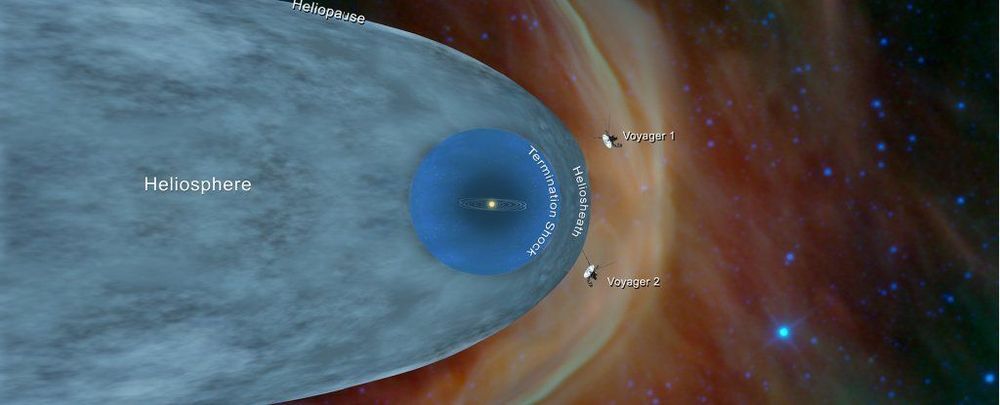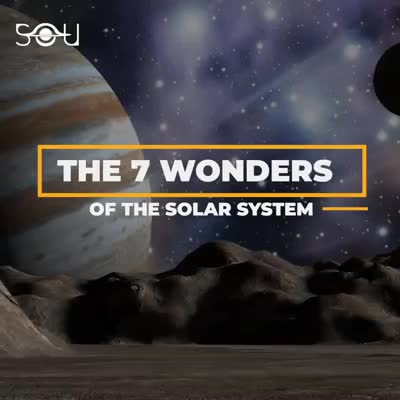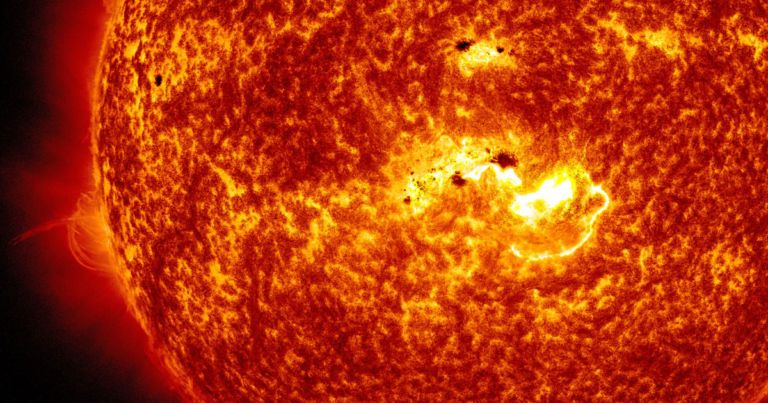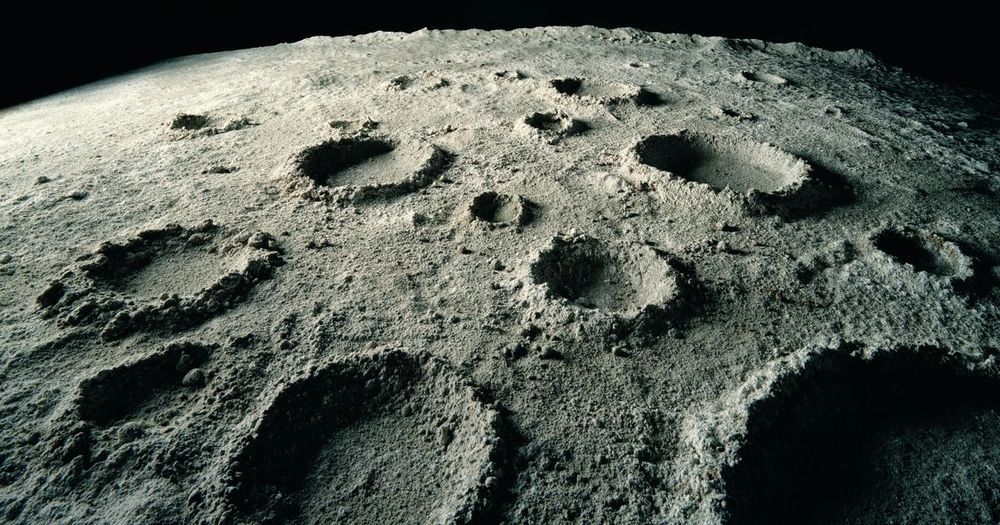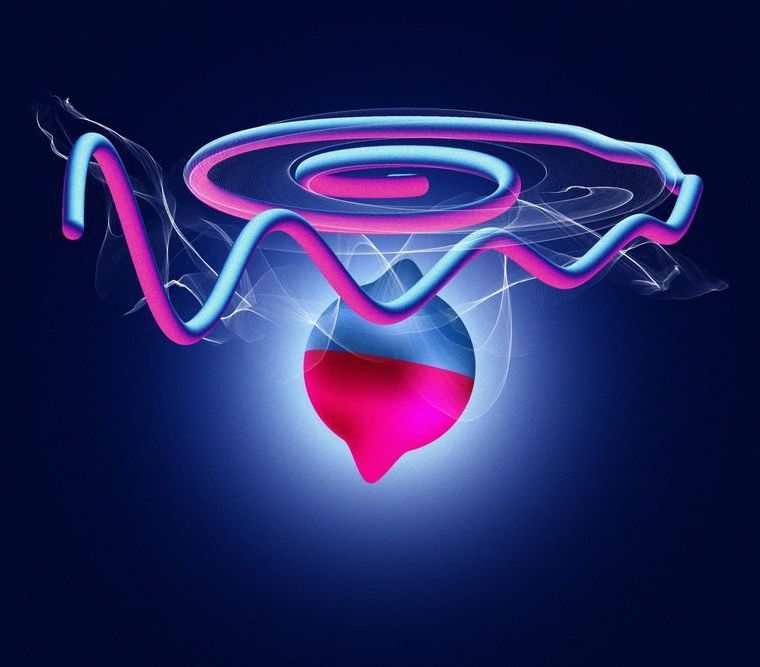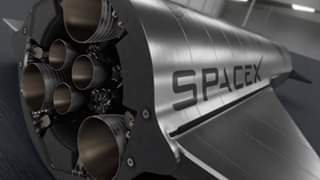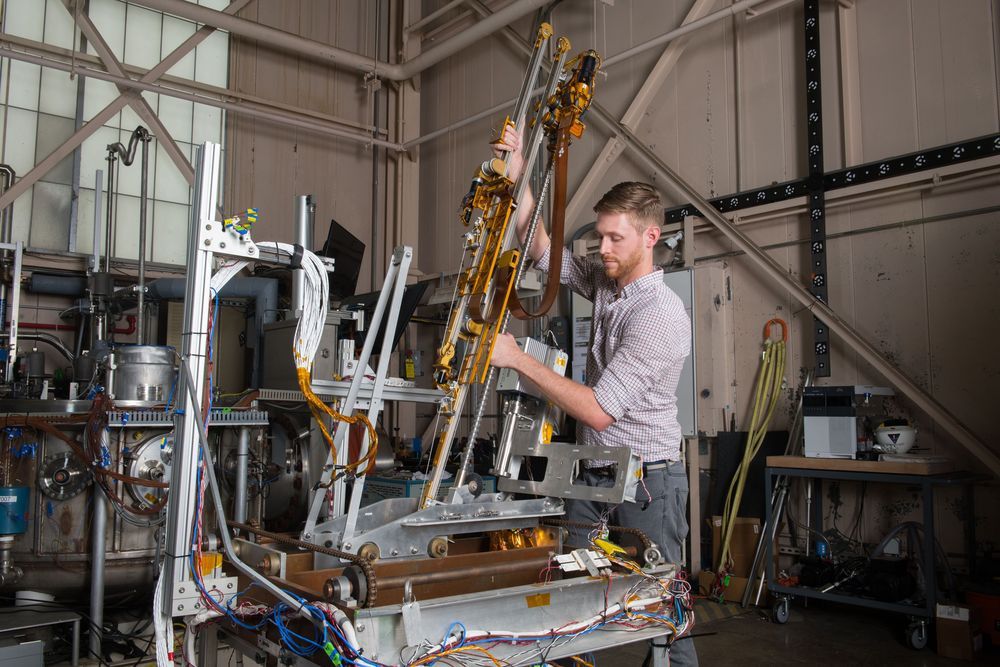Archive for the ‘space’ category: Page 475
Oct 19, 2020
Voyager Spacecraft Detect an Increase in The Density of Space Outside The Solar System
Posted by Quinn Sena in categories: habitats, space
In November 2018, after an epic, 41-year voyage, Voyager 2 finally crossed the boundary that marked the limit of the Sun’s influence and entered interstellar space. But the little probe’s mission isn’t done yet — it’s now sending home information about the space beyond the Solar System.
And it’s revealing something surprising. As Voyager 2 moves farther and farther from the Sun, the density of space is increasing.
It’s not the first time this density increase has been detected. Voyager 1, which entered interstellar space in 2012, detected a similar density gradient at a separate location.
Oct 18, 2020
Astronomers Warn That Our Sun Is Having a “Midlife Crisis”
Posted by Raphael Ramos in category: space
Keeping Calm
Over the last four years, the brightness of the other stars fluctuated wildly, whereas the Sun stayed relatively constant, according to research published Friday in the journal Science. In fact, the difference between the Sun’s brightest and dimmest moments is a fifth the size of other stars.
“We wanted to see if the Sun is somehow different,” Max Planck Institute researcher Timo Reinhold told Inverse. “People have claimed that it’s more quiet than other stars, while others have claimed that it’s similarly active so we wanted to really boil it down to this very solar-like sample that is very similar to the Sun.”
Oct 18, 2020
NASA will ‘fist bump’ an asteroid to reveal the Solar System’s secrets
Posted by Derick Lee in category: space
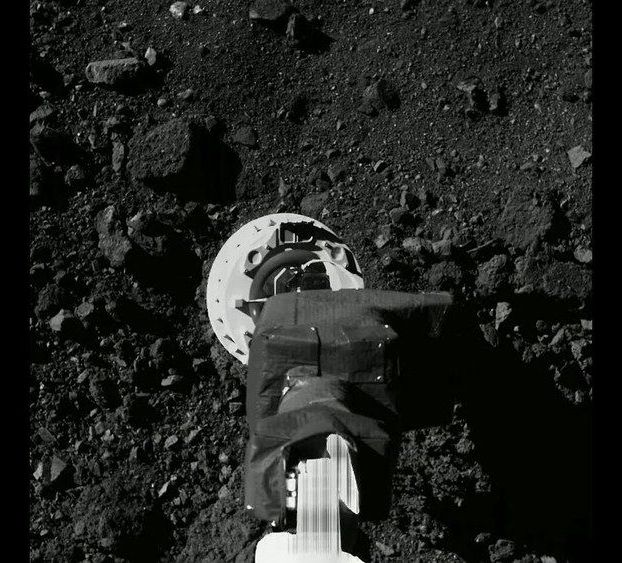
NASA is about to grab its first-ever taste of an asteroid. On 20 October, some 334 million kilometres from Earth, the agency’s OSIRIS-REx spacecraft will approach a dark-coloured, diamond-shaped asteroid named Bennu, with the aim of touching its surface for a few seconds — long enough to hoover up a collection of dust and pebbles. If successful, the spacecraft will then fly this carbon-rich rubble back to Earth, where scientists can probe it for clues to the history of the Solar System.
OSIRIS-REx spacecraft is about to execute a nail-biting manoeuvre to scoop up rock samples from the asteroid Bennu and send them back to Earth. OSIRIS-REx spacecraft is about to execute a nail-biting manoeuvre to scoop up rock samples and send them back to Earth.
Oct 18, 2020
Nokia wins NASA contract to put a 4G network on the moon. Yes, really
Posted by Alberto Lao in categories: internet, space
The network will enable communications with rovers and support the agency’s plans to have a lunar base by 2028.
Oct 18, 2020
First Observation of Nutation in Magnetic Materials – Fundamental to Making Digital Technology Faster and More Efficient
Posted by Quinn Sena in categories: physics, space
Much of the ‘memory’ of the world and all our digital activities are based on media, hard disks, where the information is encoded thanks to magnetism, by orienting the spin of electrons in one direction or the opposite.
An international team of scientists led by the Italian physicist Stefano Bonetti, professor at Ca’ Foscari University of Venice and the Stockholm University, has managed for the first time to observe the ‘nutation’ of these spins in magnetic materials, i.e. the oscillations of their axis during precession. The measured nutation period was of the order of one picosecond: one thousandth of a billionth of a second. The discovery was recently published by Nature Physics.
The axis of a spin performs nutation and precession, as with any object that revolves, from spinning tops to planets. In this research, physicists observed experimentally that the nutation of the magnetic spin axis is 1000 times faster than precession, a curiously similar ratio to that of Earth.
I’m excited to welcome Clive Neal, a professor of planetary geology at the University of Notre Dame in South Bend, Indiana, and an expert on lunar science and the Apollo Moon rock samples. A former Chair of NASA’s Lunar Exploration Analysis Group, Neal will talk about why the Moon is so crucial to our understanding of the inner solar system. Please stay tuned!
Oct 17, 2020
NASA Selects Partner to Land Water-Measuring Payload on the Moon
Posted by Alberto Lao in categories: robotics/AI, space, sustainability
NASA has awarded Intuitive Machines of Houston approximately $47 million to deliver a drill combined with a mass spectrometer to the Moon by December 2022 under the agency’s Commercial Lunar Payload Services initiative. The delivery of the Polar Resources Ice Mining Experiment known as PRIME-1 will help NASA search for ice at the Moon’s South Pole and, for the first time, harvest ice from below the surface.
“We continue to rapidly select vendors from our pool of CLPS vendors to land payloads on the lunar surface, which exemplifies our work to integrate the ingenuity of commercial industry into our efforts at the Moon,” said NASA’s Associate Administrator for Science Thomas Zurbuchen. “The information we’ll gain from PRIME-1 and other science instruments and technology demonstrations we’re sending to the lunar surface will inform our Artemis missions with astronauts and help us better understand how we can build a sustainable lunar presence.”
PRIME-1 will land on the Moon and drill up to 3 feet (approximately 1 meter) below the surface. It will measure with a mass spectrometer how much ice in the sample is lost to sublimation as the ice turns from a solid to a vapor in the vacuum of the lunar environment. Versions of PRIME-1’s drill and the Mass Spectrometer Observing Lunar Operations, or MSolo, will also fly on VIPER, a mobile robot that also will search for ice at the lunar South Pole in 2023. NASA will land the first woman and next man on the Moon’s South Pole the following year.

